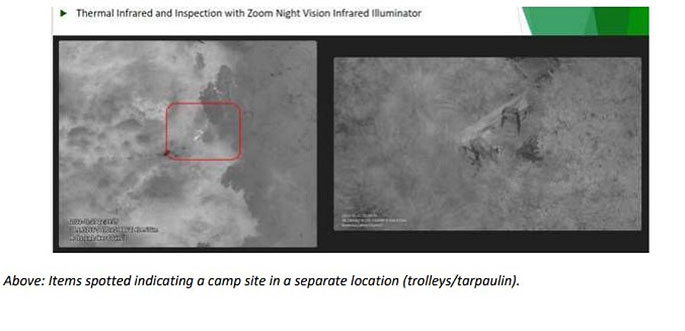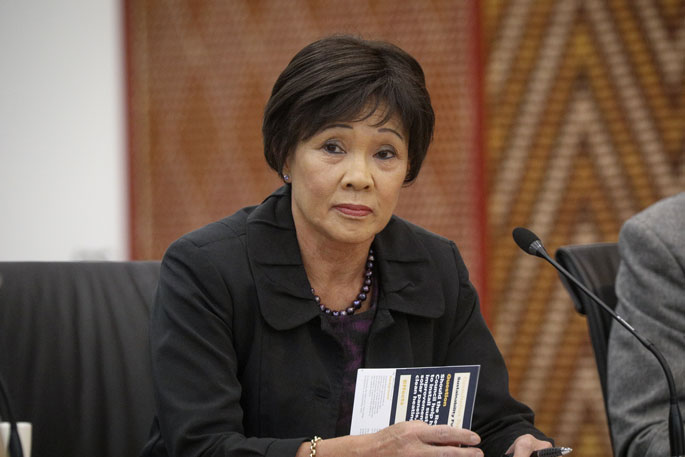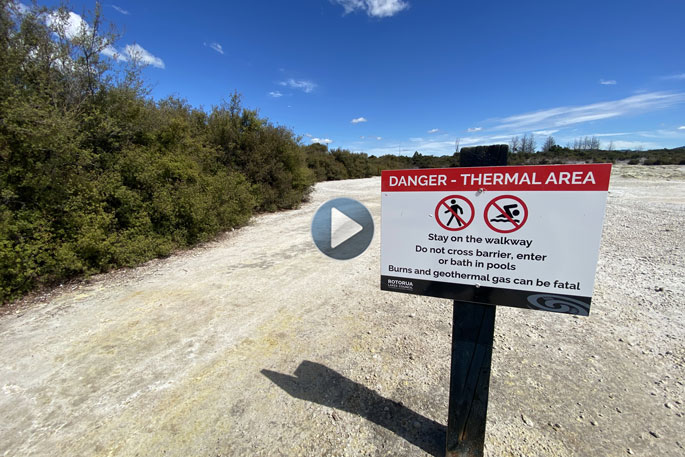Rotorua Lakes Council flew a drone over an urban reserve to find rough sleepers, and found two.
The drone's use was revealed in an operational report for January, presented to the council's Operations and Monitoring Committee meeting on March 3.
A Rotorua district councillor said the terrain was dangerous, especially at night, and it was good the council was using the technology available.
A report for the meeting stated the drone was used for a night-time fly-over of Sanatorium Reserve, which was adjacent to Puarenga Park and Rotorua's wastewater treatment plant, to the east of the city centre.
The reserve had a walking and cycling loop which was about 2.5km long with a mostly flat profile.
On Wednesday, the council confirmed the cost of the flight was more than $1700, but would be less in future now the area had been mapped.
Rotorua-based company Interpine performed the flight on behalf of the council, it said, and found two camps using infra-red technology.
'This particular area has been used in the past by rough sleepers and the presence of hydrogen sulphide makes this a particularly hazardous area to be sleeping.”
The rough sleepers were then approached by safe city guardians, it said, and 'given the opportunity to remove items and what was left was disposed of”. The people were referred to social support services.
"The use of a drone reduced the need for guardians to be randomly searching through this highly vegetated geothermal area and enabled them to proceed straight to the camps using the safest route, thereby keeping our staff safer.
On Wednesday, in a statement via the council communications team, council community wellbeing deputy chief executive Anaru Pewhairangi said the cost of the drone footage was $1712.35.
 Photos from the drone flight that found two rough sleepers. Photo / Supplied / Rotorua Lakes Council.
Photos from the drone flight that found two rough sleepers. Photo / Supplied / Rotorua Lakes Council.

That included the cost of pre-flight planning, geographic information system (GIS) mapping, a certified pilot and vehicle use, he said.
"Now that this area has been mapped and loaded as a flight area, costs for any future flyovers would be for pilot time and mapping outputs only.
"Until now our teams have regularly patrolled these areas by foot to identify sites, which are generally well off designated pathways and surrounded by geothermal activity."
He said part of the council's responsibility was for the wellbeing and safety of the community and it encouraged people to look at safer sleeping arrangements.
"We want to ensure that all members of our community are supported and offered assistance where we can."
Hydrogen sulphide is a poison that can paralyse the breathing system and kill in minutes, according to the Worksafe website.
It was harmful even in small amounts, but how much it affected a person depended on the duration, frequency and intensity of exposure, as well as individual susceptibility.
Hydrogen sulphide is also the reason for Rotorua's famed ‘rotten egg' smell.
Rotorua district councillor Sandra Kai Fong said the use of the drone was about keeping people safe.
 Rotorua district councillor Sandra Kai Fong. Photo / Andrew Warner / Rotorua Daily Post.
Rotorua district councillor Sandra Kai Fong. Photo / Andrew Warner / Rotorua Daily Post.
'It's quite dangerous in there.
'It is an unusual technique but in this day and age you need to use every tool that you have.”
She said while guardians could walk the reserve's loop, the drone likely provided 'a much bigger overview than on foot” and could identify people or things within the reserve away from walking tracks.
Fellow councillor Tania Tapsell said the approach was important to ensure the safety of rough sleepers and council staff, and for finding better solutions for rough sleepers.
"The drone approach is quite novel but an innovative one that suits the uniqueness of Rotorua."
Local Democracy Reporting also asked the council how much drone flights were expected to cost in the future per flight and how often the council expected to use the drone.
It also asked if it was going to be used in other areas and what alerted the council that there were rough sleepers in the reserve before sending the drone up.
In a statement via the council communications team, Pewhairangi said the flight over the reserve was a trial.
"No decisions have yet been made on any future use of drones.
'Our teams have been patrolling this area as part of foot patrols in and around the inner city for some years now and people occupying the area is not unexpected.”
-Local Democracy Reporting is Public Interest Journalism funded through NZ On Air




2 comments
Who pays this guy?
Posted on 15-03-2022 12:23 | By jed
"council community wellbeing deputy chief executive" This is a job that should not exist.... and, if he is the 'deputy', who is the chief?
Are you a ratepayer?
Posted on 15-03-2022 13:55 | By Centurion
If you are a ratepayer then you pay for this grandiose title. Perhaps he is the No 2 bigwig in the 'safe city guardians' organisation operated by Council, dedicated to ensuring that rough sleepers do not succumb to hydrogen sulphide (I think the last reported death from this cause was in a city motel, but then, I could be wrong).
Leave a Comment
You must be logged in to make a comment.